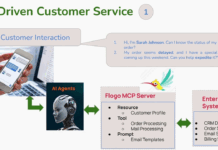 It’s the holidays again. A time when, instead of going somewhere restful and rejuvenating like Bali or Cozumel, people burn off their precious vacation time doing something far less relaxing: Visiting family. Why? Because that’s what you do, you visit family around the holidays. It’s a tradition as old as using leeches to cure migraines (and for some, just as painful).
It’s the holidays again. A time when, instead of going somewhere restful and rejuvenating like Bali or Cozumel, people burn off their precious vacation time doing something far less relaxing: Visiting family. Why? Because that’s what you do, you visit family around the holidays. It’s a tradition as old as using leeches to cure migraines (and for some, just as painful).
If you ask most folks “What’s the best way to bring people together?” they’ll tell you that nothing pulls in disparate individuals from all corners of the Earth better than a family holiday celebration. But are “most folks” right? Or is there a better, less argument-prone approach available to you? We think so.
Round 1: Event Notifications vs. Passive-Aggression.
First, in order to bring people together, you have to tell them you want them to be somewhere at a certain time. You could get people to show up at a predetermined time and place by going the traditional route of telling other people in the hopes that they will tell the people you want to attend. But saying to someone, “It would be nice if Jerry came home for the holidays, but if he has something more important to do…” is an iffy and inefficient tactic, at best. Nonetheless, it’s a popular approach with relatives.
If you wanted to be more direct, however, you could use any one of several tibbr features: like Micro-blogging, Chat, Loudspeaker (for unmissable posts), or even just a simple Event notification. For honest, clear communication, tibbr wins this round walking away.
Round 2: Holiday Travel vs. Web Conferencing.
Next, let’s look at the problem of distance. The holidays typically require physically moving one or more individuals from their current location to the place where everyone else is — that’s because holiday tradition dictates the eating of certain foods and the hugging of certain elders. Yet traveling for those traditional purposes is time-consuming, hassle-prone, and expensive.
Conversely, a leading Enterprise Social Networking platform like tibbr allows people from all over the world to come together — safely out of hugging range — using their favorite web conferencing tool such as WebEx, Skype, Google Hangouts, or others. But while tibbr does avoid awkward physical intimacy, it doesn’t come with free home-cooked meals, so this one’s kind of a draw.
Round 3: Team collaboration vs. Family conflict
The objective of using tibbr to bring people together is often “increasing team communication, collaboration, and productivity.” However, the goal of most holiday get-togethers is more about “decreasing domestic disturbances and frantic calls to 911.” The holidays may be good at bringing people together, but it’s pretty bad for getting work done (most likely because it’s the holidays).
And the mere act of bringing people together doesn’t necessarily accomplish anything positive (see The U.S. Congress). Whereas accomplishing things is where the tibbr approach really shines. tibbr helps people do a lot of work, a lot faster and easier. In fact, getting work done faster and easier is one of the main benefits of this social networking platform, so this round goes to tibbr, no question.
The winner, in a knock out.
There you have it in a nutshell: the leading Enterprise Social Networking platform, tibbr, beats out the Holidays for bringing people together to accomplish things. If you want to learn more ways that tibbr can improve workplace collaboration, productivity, and innovation, sign up for a free trial now »





